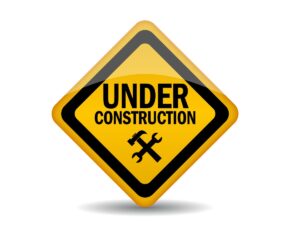 "Ownership" in property law is a "bundle of rights" including the right to use, to exclude, to transfer, to lease, to leave to heirs, to mortgage, etc. In a condominium regime, it includes the right to vote on affairs that affect the condominium as a whole.
"Ownership" in property law is a "bundle of rights" including the right to use, to exclude, to transfer, to lease, to leave to heirs, to mortgage, etc. In a condominium regime, it includes the right to vote on affairs that affect the condominium as a whole.
The right to vote is defined by the condominium declaration (aka "Regime" or "Constitution" or other name for the charter document that creates the condominium). Voting is not defined by the underlying property law. of the state.
Owners of condominium units ("Units") and/or garages in Las Mañanitas have the right to vote as "co-owners" of the condominium regime where the Unit or garage is (in our case, Phase I, Phase II or Phase III). At this regime level, they vote on dues, budgets, reserves and membership on the Vigilance Committee. They also appoint an "Administrator" to execute the operating plan they just agreed to (and paid for) in their "Annual Ordinary Assembly" meeting. So, the question is, "who exactly exercises the right to vote at this Regime level?"
For purposes of discussion, we'll ignore the structure of a fideicomiso and treat the beneficiary of a fideicomiso as the legal owner. Now the "legal title" of that owner can be a single person (Joseph Alan Doe), a joint holder (most often spouses), a trust or some other legal entity like a corporation, partnership or LLC. Since votes need to be exercised by a human being (a "natural person" in legalese), who has the right to vote? Well, if title is a single person, then the vote belongs to that person. In the case of joint title, either party may vote. If both try to vote differently, the person listed FIRST on the title is the controlling vote. [verify this per BCS law or our Regime doc -- I read this somewhere but I'm not sure where.] In the case of a Trust, its the trustee (and the trust itself defines which vote controls if there is disagreement among trustees. In the case of an LLC, corporation or partnership, its the "authorized agent" or officer of that legal entity. As a practical matter, internal disagreements are very rare.
The real questions occur when a Unit or garage is in process of being sold and bought by a new Owner (or transferred by gift, divorce decree or testamentary transfer). The real question is When does the regime-level vote move from the old Owners to the new Owners? There are several steps to most real estate transfers in BCS:
Sequence
- Signed Contract For Sale. Buyer and seller have agreed, but now they need to fulfill conditions for sale. Money into escrow. Inspections. Title reviews. Perhaps other conditions. While the contract is in process, it might fail; so, the old Owner is still in charge of the regime vote.
- There are two possibilities for the next step:
- Fully completed contract. This means all documents are signed and transferred to the Notary for closing. OR
- Promise To Trust Agreement. This is a contract that confirms that the original Purchase-Sale contract has been fulfilled, all the monies are in escrow and the Buyer may take possession pending the formal closing. At that point, by contract, the Buyer assumes the obligations to pay HOA dues, to insure the property, to pay taxes on it and otherwise to act as if they are Owner. But the Buyer does not have legal title. A portion of the escrowed money is released to the Seller, but some is held back. [?? And they have not given the Notary all the legal documents required for Closing.] Typically, the parties do this while they are working out some minor detail, e.g., getting a paid lien released prior to the transfer of title.
- Notary Files Everything. The Notary files everything with the Public Registry.
- The Public Registry formalizes the filing. A certified copy of the filed deed is available from the Public Registry.
- Copies to Owner and HOA. The new Owner gets a copy of the filing and shares it with the HOA for their records.
Regime-Level Vote
So where along this flowchart does the regime-level vote transfer to the new Owner? According to the Rules and Regulations in the Phase II and Phase III Declarations, anyone with a private purchase agreement or that is in the process of formalizing its ownership title can vote. Phase I is silent, but we interpret it the same way as set forth in Phase II and III:
16.12 Requirements to have the right to participate in the Assemblies. Owners duly registered as such before the Administrator will be able to participate in any Assembly.
16.13 In order to be registered with the Administrator, the Owner shall present the following documentation to the Administrator:(a) In case of owning a Condominium Unit, the title corresponding to the property.
(b) In the event of being a trustee over a trust in a Condominium Unit, will require a letter issued by the corresponding fiduciary that evidences said quality.
(c) In case of trustee through a Trust Promise Agreement, a letter from the promissory trustor of the corresponding Condominium Unit.
Membership In The HOA
The Bylaws (aka Constitution) of the Las Mañanitas HOA, A.C. ("the HOA") says, in part:
ELEVENTH. The individuals or legal entities, nationals or foreigners that are owners and/or beneficiaries of trust agreements that own residential private units located within the Condominiums ... may be members of the Association, provided that they are approved in writing by the Board of Directors of the Association by means of a joining letter and such Associates shall be ratified in a General Associates Assembly.
As of the moment the individuals or legal entities, nationals or foreigners that are owners and/or beneficiaries of trust agreements that own residential private units within the Condominiums, transfer/sell their corresponding private units, they will no longer be members of the Association. It is understood that by transfer/sell it means any and all private or public agreements in which the corresponding residential private unit and/or possession is transferred to a third party.
Associa Mexico administers scores of HOAs in Mexico, and they have a simple rule of thumb for "who is a member of an HOA." They require one of the following:
- Recorded Deed of Trust,
- Letter from Notario confirming that the deed is in the process of being recorded, or
- Affidavit of Property Transfer signed by both the buyer and seller [I think we should modify this language to suit OUR needs, not Associa's -- Associa derives its right and duties from us -- we tell it who's a Member; we maintain the database of Owners, not them. -- require a copy of the underlying agreement?]
So, Bottom Line: When does the new Owner get the right to vote at either the Regime meetings or the HOA meetings? I believe we should require one of the three documents listed above whenever anyone takes possession and wants to assert an ownership interest. Frankly, the Affidavit says there is a transfer agreement so that meets the needs of 16.13 of the Regime Rules and Regulations. Any one of them is a "go" for voting rights.
Let me underscore that this does not authorize the Owner in a "soft close" situation to do things that only a legal-title owner can do --like apply a lien to the unit or sell it further. it's just the right to VOTE as an Owners (and to pay the HOA fees <smile>).
We should expand this to publish a procedure for the whole selling-buying process
- Notice when its for sale (esp. if it'll be shown).
- Completed sale (but not closed)
- HOA letter that dues are paid
- Buyer takes possession (under PTT, Notario letter, Closed Deed, or the "affidavit" above is signed) -- THIS IS WHERE VOTE TRANSFERS
- Final Deed (we should have for our files)
Phase III
25.7 NOTICE OF SALE OF A CONDOMINIUM UNIT.
Selling a Condominium Unitwill besubject to the following:
(a) Concurrently with the signing of any contract for the sale or transfer of a Condominium Unit through which the Acquirerwill convertin Owner or Trustee thereof,eitherin a period of five (5)days skillfullater, the Transferorwill notifyto the Administrator in writing of said sale. Blissnotification will contain:
(I) The name of the Acquirer and the Assignor.
(II) The address of the Condominium Unit acquired by saidacquirer.
(III) The address of the Purchaser.
(IV) the date of saleor transfer.
